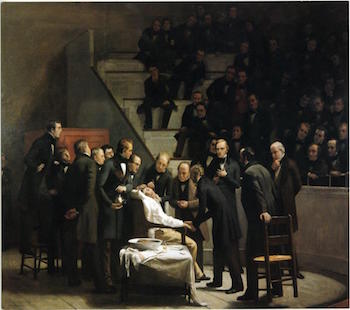As we approach the 170th anniversary of the first successful use of a form of anesthesia in a public procedure, it makes sense to think of how anesthesia has changed the world of medicine. Before surgical anesthesia services, surgery was extremely uncommon and only performed when absolutely necessary. Patients and physicians avoided operations due to the unbearable amount of pain that would come with the procedure.
Today, anesthesia is commonly used in procedures throughout the world, but back then many different techniques were used to provide a distraction and attempt to dull the sensation of pain. At one time, a patient may have been instructed to “bite the bullet”. This is one of those phrases that is often used without much thought of the origin behind the words. Well, before there was anesthesia, a wounded patient was given a bullet to bite down on before undergoing a painful treatment or surgery. Aside from biting bullets and sticks, there were many other interesting practices and methods of relieving pain and inducing sleep over the years.
Throughout the centuries, some of these methods included:
- Acupuncture
- Physical restraint
- Different mixtures of plants and herbs
- Hypnosis
- Knocking the patient unconscious with a blow to the jaw
By the 1840’s, opium and alcohol were the two surgical anesthesia methods considered most useful. The downside to these two methods was that they came along with a long list of negative side effects.
Nitrous oxide, also known as laughing gas, was later used as an anesthetic by many, including Gardner Colton and Horace Wells. Wells, a dentist, used nitrous oxide to extract patients wisdom teeth. However, he lost his credibility when he attempted to demonstrate the use of nitrous oxide publicly and the patient cried out in pain.
A few years later, William T. G. Morton, a Boston dentist who is considered the founder of modern surgical anesthesia, was interested in finding an alternative to nitrous oxide. In October of 1846, Morton and world renowned surgeon John Collins Warren made history when they successfully used ether vapor as an anesthetic to remove a patient’s tumor in a public demonstration. This procedure was a major breakthrough in the world of medicine and the news spread to Europe and beyond like wildfire.
Surgical anesthesia services only continued to improve and develop after the breakthrough in 1846, and its use became a common practice. This opened up many discoveries and findings which eventually led to the forms of anesthesia we use today. Since that day in 1846, anesthesia has changed, evolved, and advanced, and we are very thankful for that!

